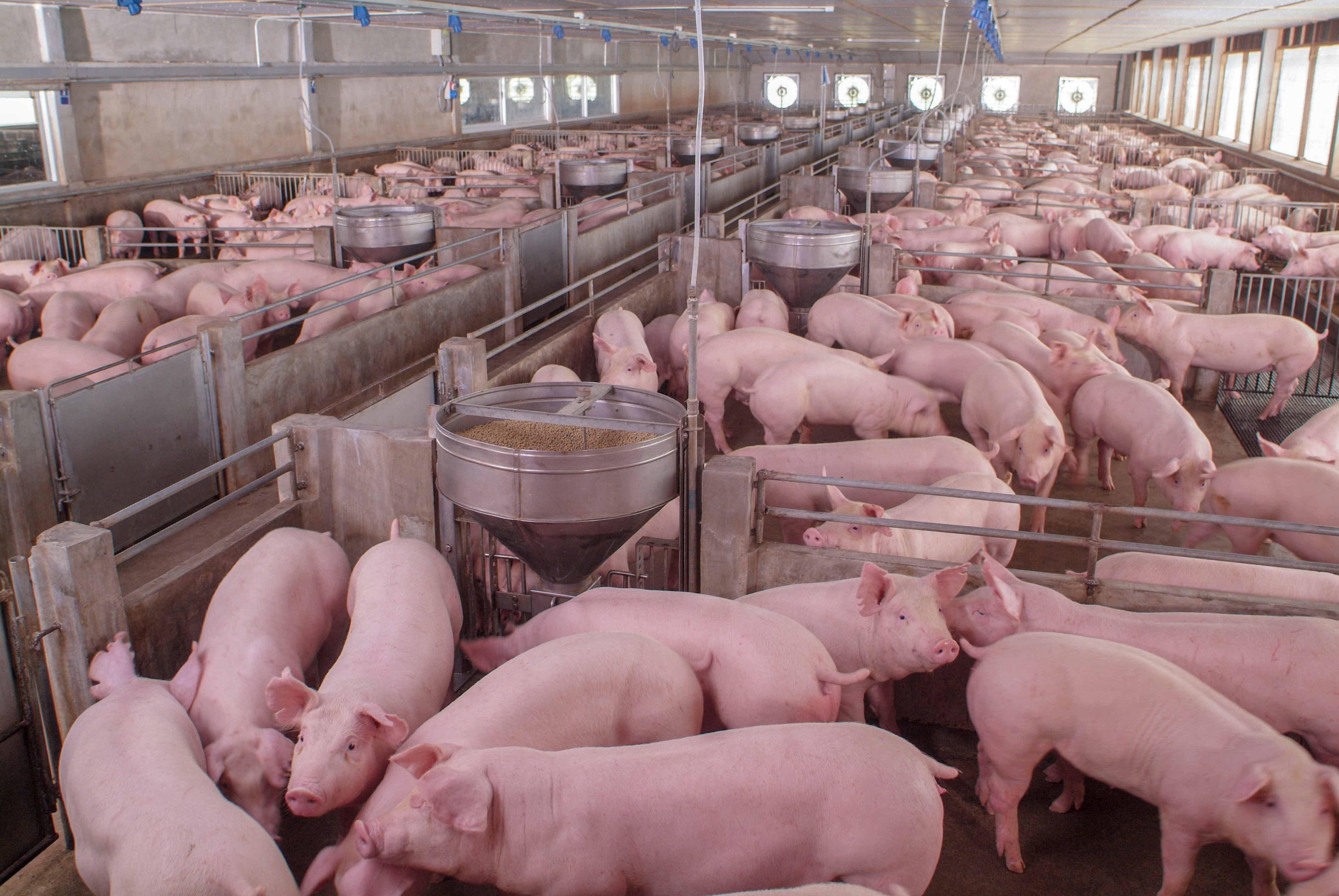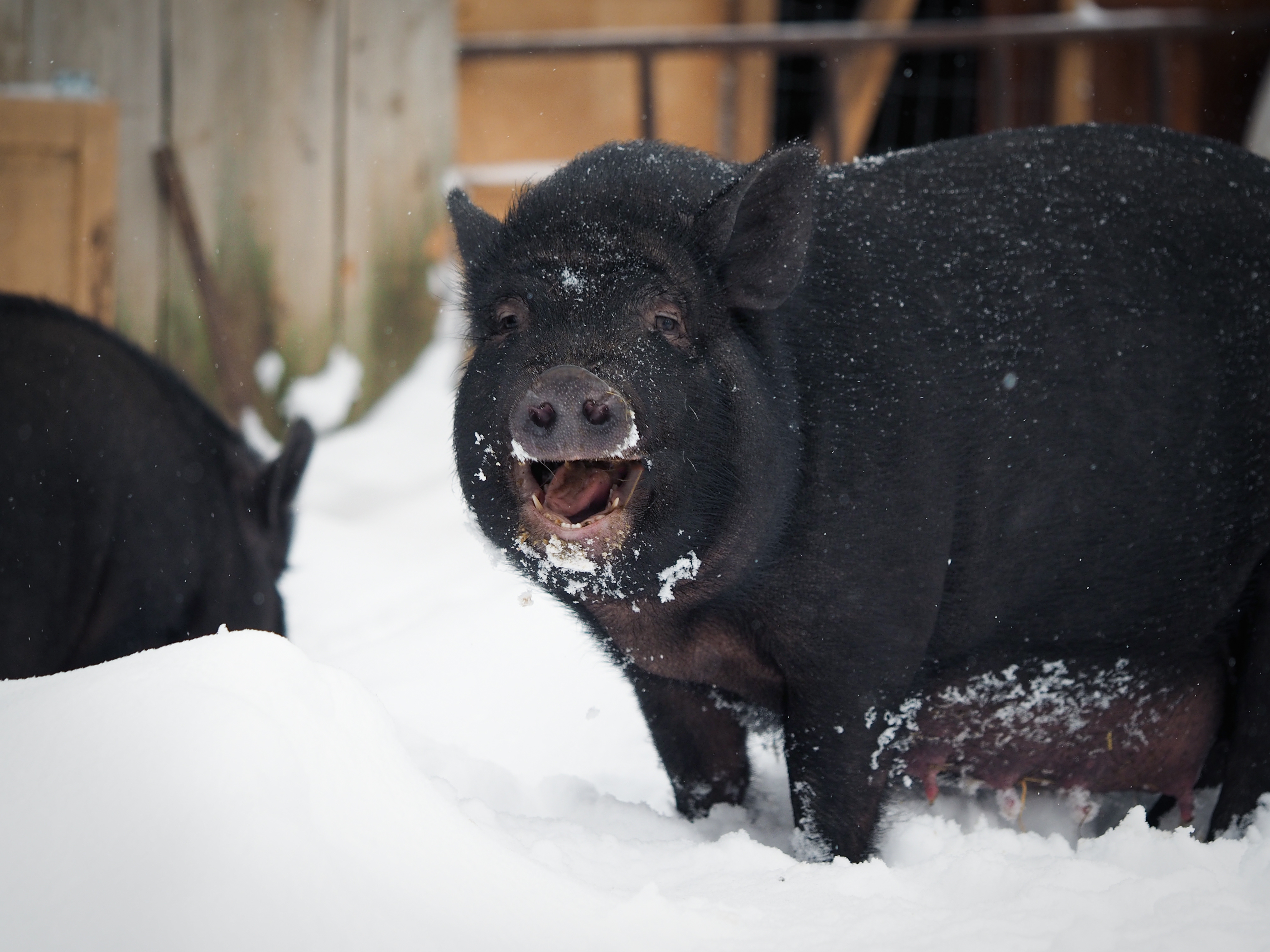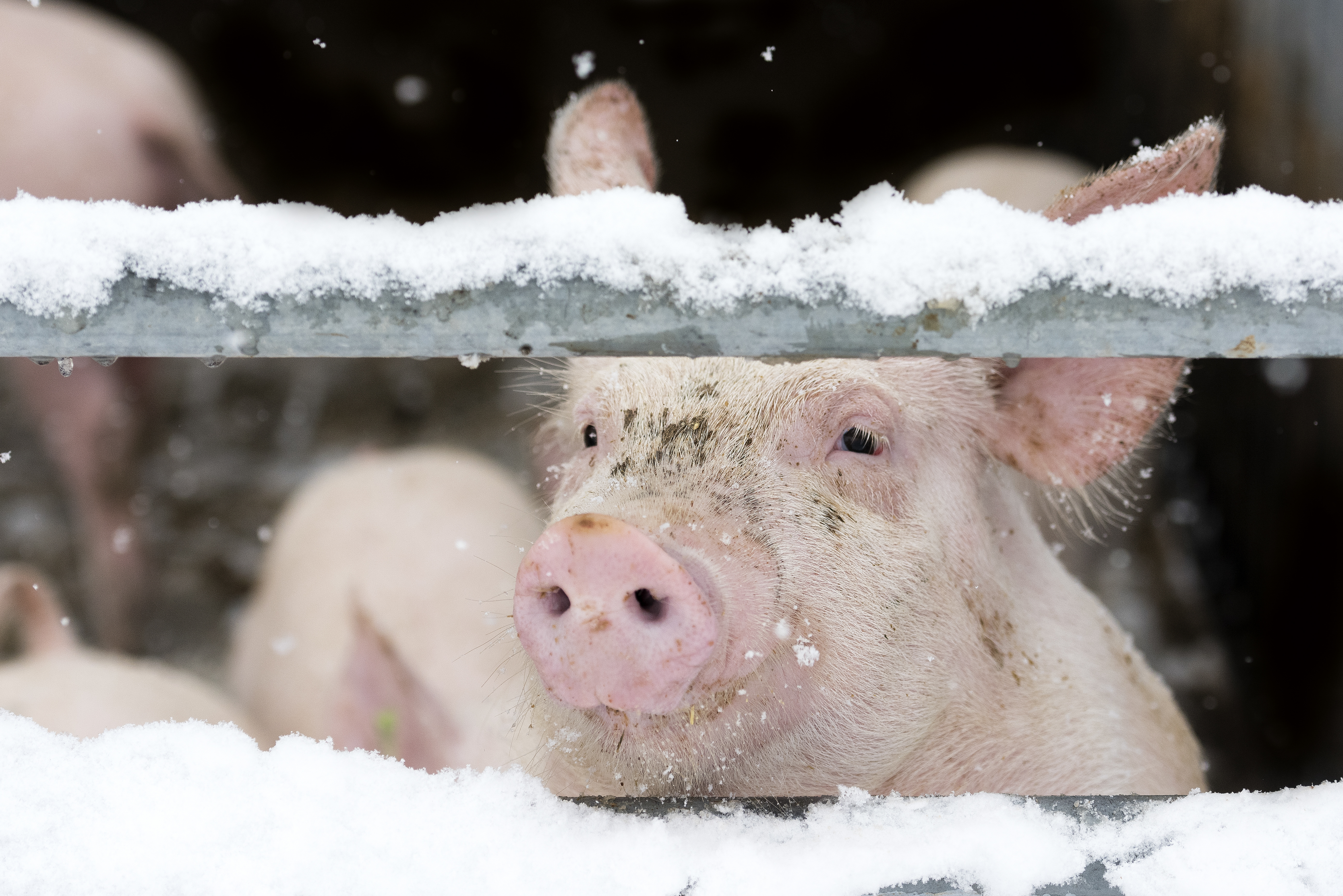



Top tips for managing farrowing in cold weather
Kicking off our How to keep your pigs warm in winter series, The Pig Site highlights top tips for protecting sows and piglets outdoors.Part of Series:
Next Article in Series >
Tips for the farrowing shed
Producers should monitor the heat levels in the shed when the sows farrow. The creep area should be heated to prevent piglet mortalities. Make sure all areas of the shed are lit, especially during feeds. Researchers have noted that feeding sows and new piglets in the dark can adversely impact their sleeping rhythms and overall health.
For best results, producers should observe the pigs during feeding time; remember that piglets require more food in the winter months to keep themselves warm. Change the feeding schedule or lighting every so often to see how the piglets respond. This will allow you to observe anything out of the ordinary whilst recording normal behaviour patterns.
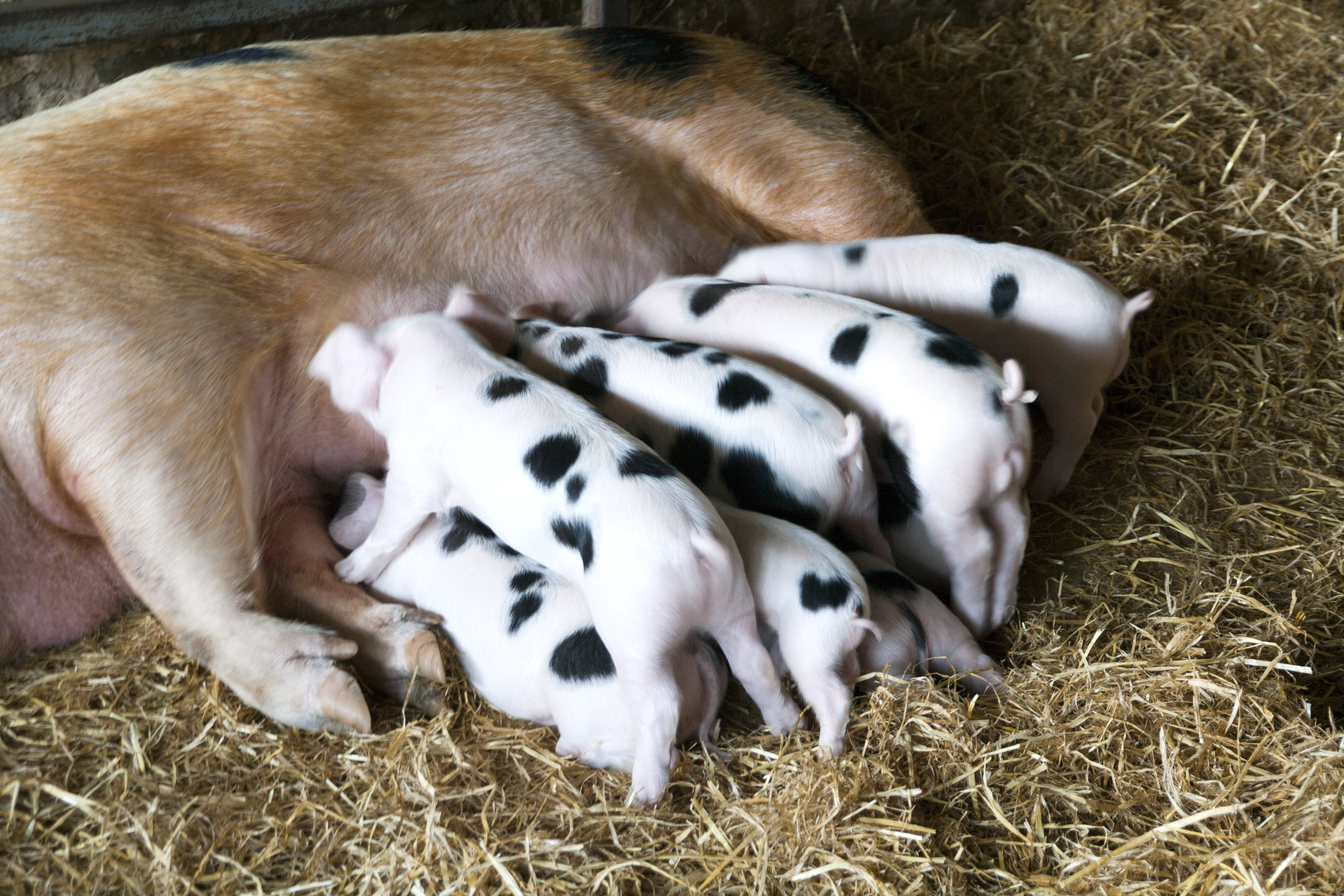
Outdoors
Getting the most out of the arc
Getting the best results with a farrowing arc is reliant on multiple factors: the placement of the arc and the type of soil in the yard certainly influence a litter’s survival. If you have heavy or clay-based soil, and if the arcs are at the bottom of a sloping garden or field, mud and groundwater will be a major consideration.
The door to the arc should be covered with sackcloth (or a similar hard-wearing natural material). The material can be lowered over the arc entrance at night to reduce heat loss and prevent draughts. This has been shown to reduce weather-related stress in piglets and will help to keep disease at bay.
Producers should consider raising the arc off the ground, using railway sleepers, for example. This will prevent groundwater from entering the arc, ensuring bedding is kept dry and clean. If the arc is made of treated wood or boards, it is important to ensure that the seams are sealed to prevent draughts. Producers should also face arcs away from the prevailing wind and weather.
Strawing up at farrowing
As a general rule, little and often is the key for strawing up for winter farrowing. This makes it easier to manage moisture levels and ensure piglets have their best chance of making it through the cold weather. Producers should also be prepared to adjust the strawing up routine according to the weather – cold snaps require immediate attention in order to prevent and reduce the number of mortalities.
Before the sows farrow, make sure any holes in the arcs are marked with spray paint and blocked up with straw. This will prevent draughts and remind you which parts of the arc require attention when you use them again. If the ground is uneven, use poor quality straw to level it out before positioning the arcs. This will improve drainage and reduce draughts. If there’s a step in and out of the arc, place some straw in the fender area to make a temporary ramp. This way, if a piglet falls out, they can climb back inside.
Before letting the sows into the arc, check the condition of the straw. Remove any wet or dirty straw and make sure the correct amount of is laid out. Wheat straw is best for nest building, avoid using barley (it’s too long and stalky and piglets can get tangled in it). Be careful not to overstraw – newborn piglets can’t push through it.
Between the first hour and 48 hours after farrowing, observe the sow’s behaviour. If she spends a lot of time away from the arc, she can’t provide heat to the piglets – consider adding more straw. If she only leaves the arc to eat and drink, less straw is needed. Producers should strike a balance between providing clean and dry straw with disrupting the piglets’ new feeding pattern. Damp straw should be avoided.
Have you tried using a yurt?
A yurt is a circular, insulated tent that can house a small group of sows when they need to farrow. The structure is semi-permanent and can be easily modified, making it a good option for small-scale producers who want to let their sows farrow without crates, but can’t make the investments for permanent farm structures.
According to research from the University of Illinois, the ambient temperature in the yurt was 10-15 degrees C warmer than the outside temperature. After trialling the system, the researchers concluded that it had similar outcomes to other crate-free farrowing options.
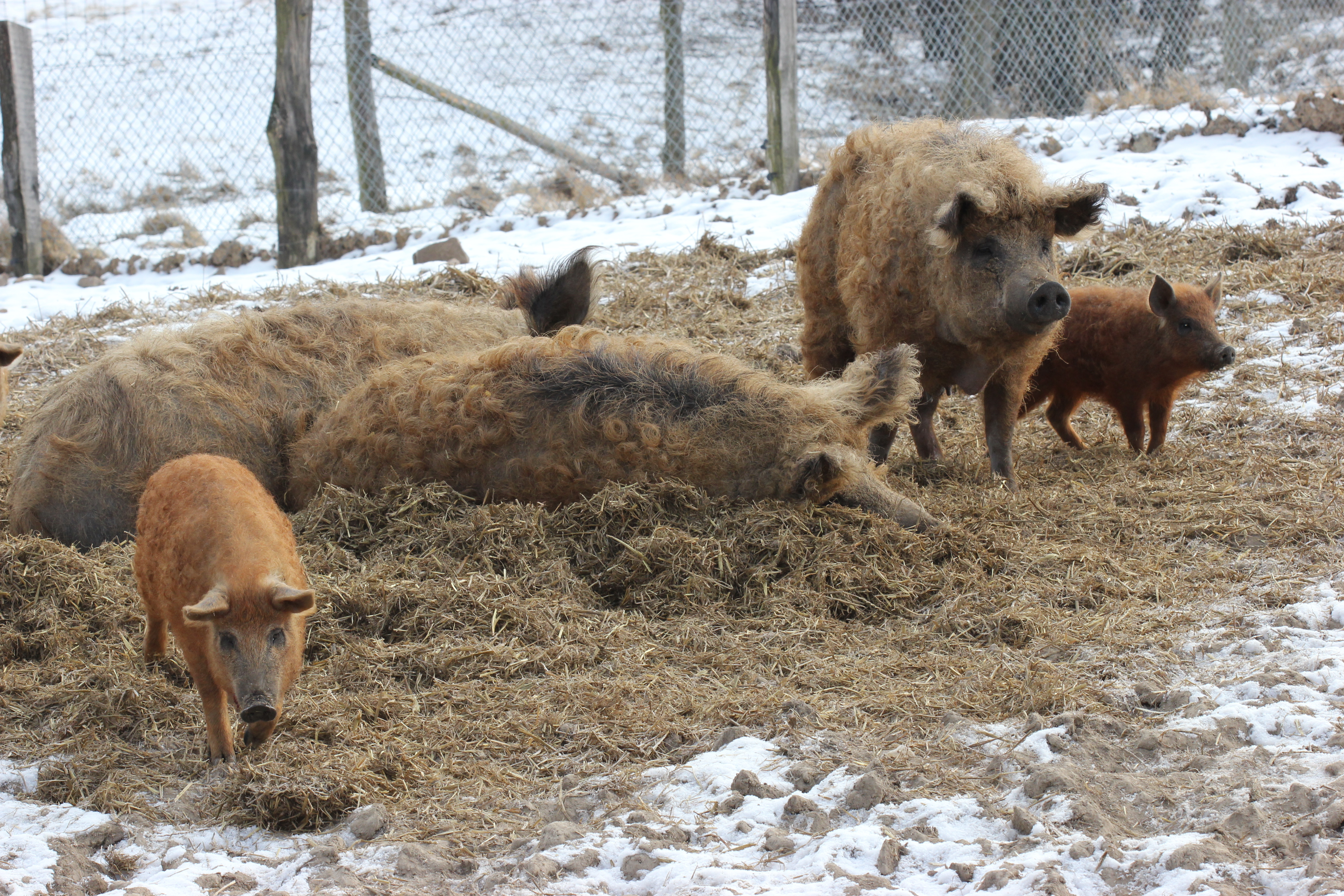
Other considerations
If producers have to contend with harsh winters, it may be worth researching and investing in breeds that can handle cold weather. Gloucester old spots, Mangalitzas, Oxford sandy and blacks and Tamworths are hardy breeds that can withstand prolonged cold spells.










